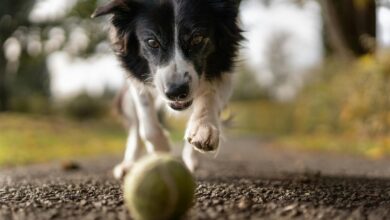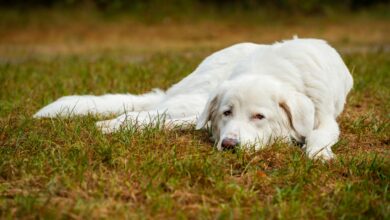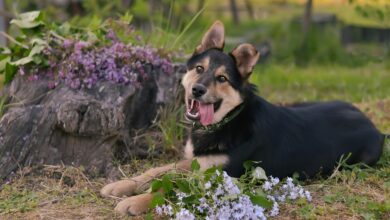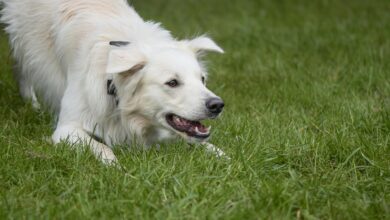Giant Dog Breeds: Gentle Giants with Big Hearts and Needs
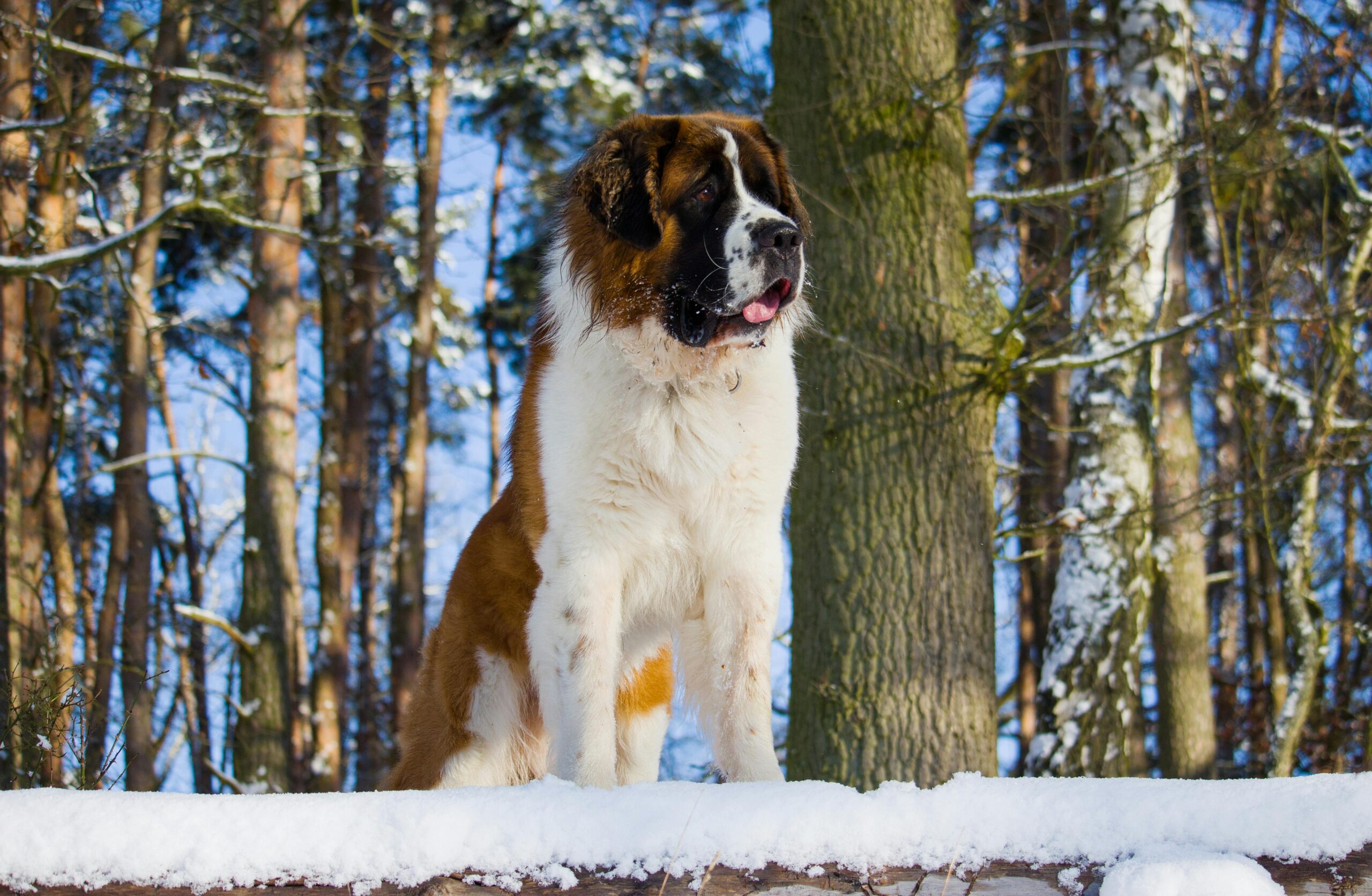
Table of Contents
Giant dog breeds. The very phrase conjures images of impressive size, undeniable presence, and often, a reputation for being exceptionally gentle and loving companions. If you’re drawn to a canine friend who stands head and shoulders above the rest, offering not just overwhelming affection but also a truly unique bond, then embarking on the journey with a giant breed might be the perfect adventure for you. But welcoming a dog of such stature into your life is a commitment that goes beyond simply having more dog to love.
It requires a deep understanding of their specific requirements, from their physical needs and health considerations to their training and socialization. This article is your comprehensive guide to navigating the world of giant dog breeds, providing you with the essential insights you need to ensure a happy, healthy, and fulfilling life for both you and your colossal canine companion.
Why Choose a Giant Dog Breed? Understanding Their Unique Appeal
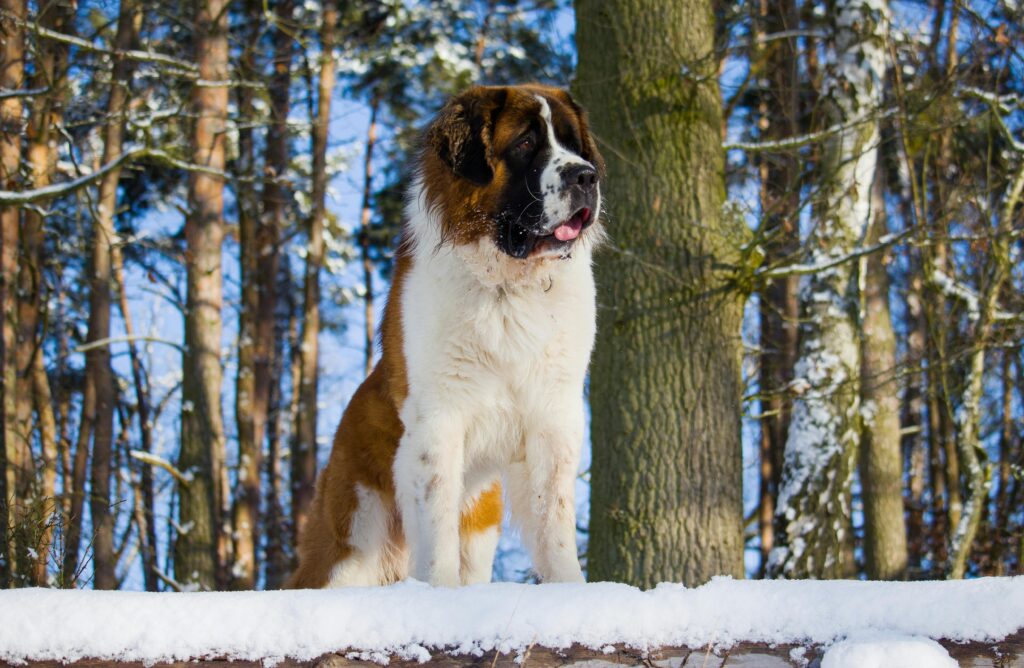
So, what is it about giant dog breeds that captivates dog lovers? For many, it’s the sheer scale of their affection. Despite their imposing size, breeds like the Great Dane, Saint Bernard, and Mastiff breeds are often renowned for their gentle nature and unwavering loyalty. Imagine a furry friend who can literally offer a comforting embrace, a living, breathing teddy bear who craves your attention and companionship.
Beyond their affectionate disposition, there’s also a certain majestic presence that these dogs possess. They command attention wherever they go, not through aggression, but through their quiet confidence and often serene demeanor. For those seeking a pet that offers a sense of security and a truly unique conversation starter, a giant breed fits the bill perfectly.
Furthermore, despite their size, many giant breeds can be surprisingly calm and relaxed indoors, provided they receive adequate exercise. They are often content to lounge nearby, offering a comforting presence and a warm weight to lean on. This makes them suitable for various living situations, as long as you can accommodate their physical size and exercise requirements.
However, it’s crucial to move beyond the romanticized image. Owning a giant dog breed comes with significant responsibilities and potential challenges that you must be prepared to address.
The Realities of Life with a Giant: Space, Strength, and Slobber
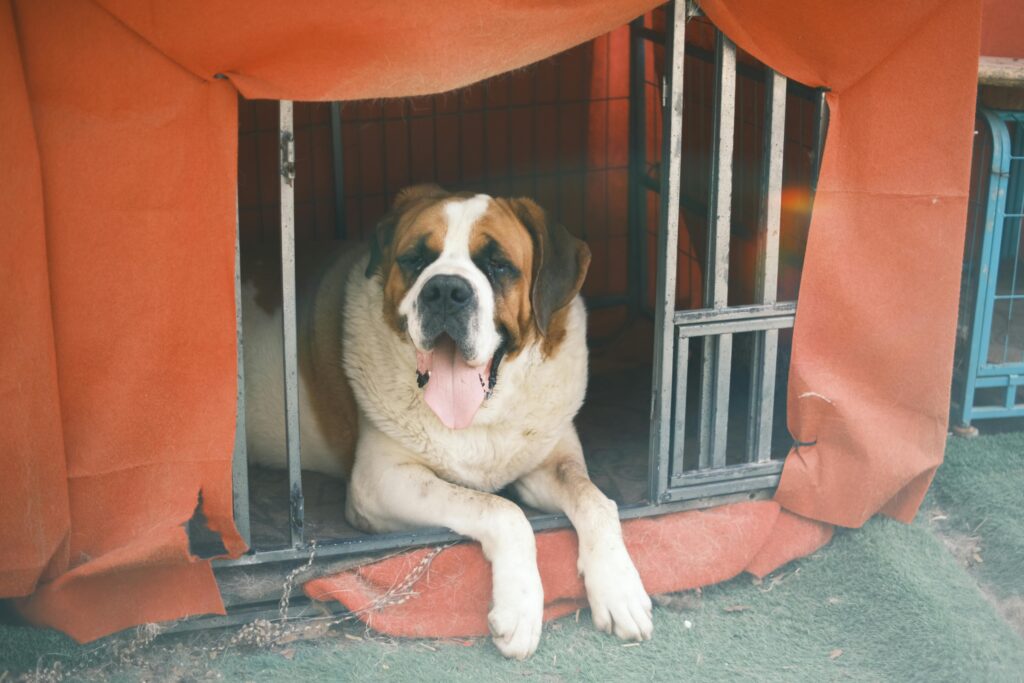
Let’s talk practicalities. The most obvious consideration when choosing a giant dog breed is space. These dogs need room to stretch out, move around comfortably, and lie down without feeling cramped. A small apartment might be feasible for a giant breed if you dedicate significant time to outdoor activity, but a home with a yard or access to open spaces is generally more conducive to their well-being. You’ll need to consider the size of your home, your furniture, and even your vehicle when envisioning life with a giant canine.
Strength is another undeniable factor. A playful nudge from a Great Dane can be the equivalent of a full-body shove from a smaller dog. Leash training and obedience are paramount. A strong giant breed pulling on the leash can be dangerous for both you and your dog, not to mention others around you. Early and consistent training is not just recommended; it’s absolutely essential for managing their strength and ensuring they are well-behaved citizens of the dog world.
And then there’s the charm of… well, slobber. Many giant breeds, particularly those with jowls, are known for their propensity to drool. If you’re a meticulously tidy person who cringes at the thought of doggy moisture, this is something you need to honestly consider. While some breeds drool more than others, it’s a common characteristic and something you’ll likely need to adapt to.
Beyond these factors, there are unique considerations regarding their physical development and overall health.
Understanding the Specific Needs of Giant Breed Health and Development
Bringing a giant breed puppy home is an exciting time, but it’s also a period requiring careful attention to their rapid growth. Unlike smaller breeds, giant breed puppies grow at an astonishing rate, and this rapid development can put stress on their developing bones and joints.
Nutrition plays a critical role in their healthy development. Giant breed puppies require specially formulated food that supports their controlled growth. Overfeeding or providing food with an incorrect nutrient balance can contribute to orthopedic problems. Your veterinarian will be an invaluable resource in determining the right diet for your giant breed puppy and adult dog.
Exercise is essential, but it needs to be managed carefully, especially for puppies. Excessive or high-impact exercise before their growth plates close can increase the risk of joint issues like hip and elbow dysplasia. Controlled, low-impact exercise, such as gentle walks and supervised play, is key during their puppyhood. As they mature, their exercise needs will evolve, but always prioritizing their joint health is crucial throughout their lives.
Giant dog breeds are also prone to certain specific health concerns that you should be aware of. Bloat (Gastric Dilatation-Volvulus or GDV) is a life-threatening condition where the stomach fills with gas and can twist. While not exclusive to giant breeds, they are at higher risk. Understanding the signs of bloat and knowing when to seek immediate veterinary care is vital. Feeding smaller, more frequent meals, avoiding strenuous exercise immediately after eating, and potentially exploring preventative surgery (gastropexy) with your veterinarian are important considerations.
Other common health concerns in giant breeds can include heart conditions, certain types of cancer, and orthopedic issues beyond dysplasia, such as osteochondritis dissecans (OCD). Regular veterinary check-ups, proactive health management, and working closely with your veterinarian are essential for catching potential issues early and providing the best possible care. Insurance designed for giant breeds can also be a wise investment considering their higher risk for certain health conditions.
Training Your Gentle Giant: Consistency, Patience, and Positive Reinforcement
Given their size and strength, training is non-negotiable for giant dog breeds. A well-trained giant is a joy to live with, a poorly trained one can be a handful, or even a danger. The good news is that most giant breeds are intelligent and eager to please, making them receptive to training with the right approach.
Consistency is key. Establish clear rules and boundaries from day one and ensure everyone in the household follows them. Giant breeds thrive on routine and knowing what is expected of them.
Patience is paramount. While intelligent, giant breeds mature more slowly than smaller breeds, both physically and mentally. Don’t expect instant results. Be patient, celebrate small victories, and be prepared for setbacks.
Positive reinforcement is the most effective training method for giant breeds. They respond exceptionally well to praise, treats, and play. Harsh corrections or punishment can damage their confidence and your bond. Focus on rewarding desired behaviors to encourage them to repeat them.
Early socialization is also critical. Exposing your giant breed puppy to a variety of people, places, sounds, and other well-behaved dogs from a young age will help them develop into confident, well-adjusted adults. A well-socialized giant is less likely to be fearful or reactive in new situations.
Consider professional training classes, especially for puppy socialization and basic obedience. Working with an experienced trainer can provide valuable guidance and help you navigate the unique challenges of training a large dog.
Finding Your Perfect Gentle Giant: Exploring Popular Giant Dog Breeds
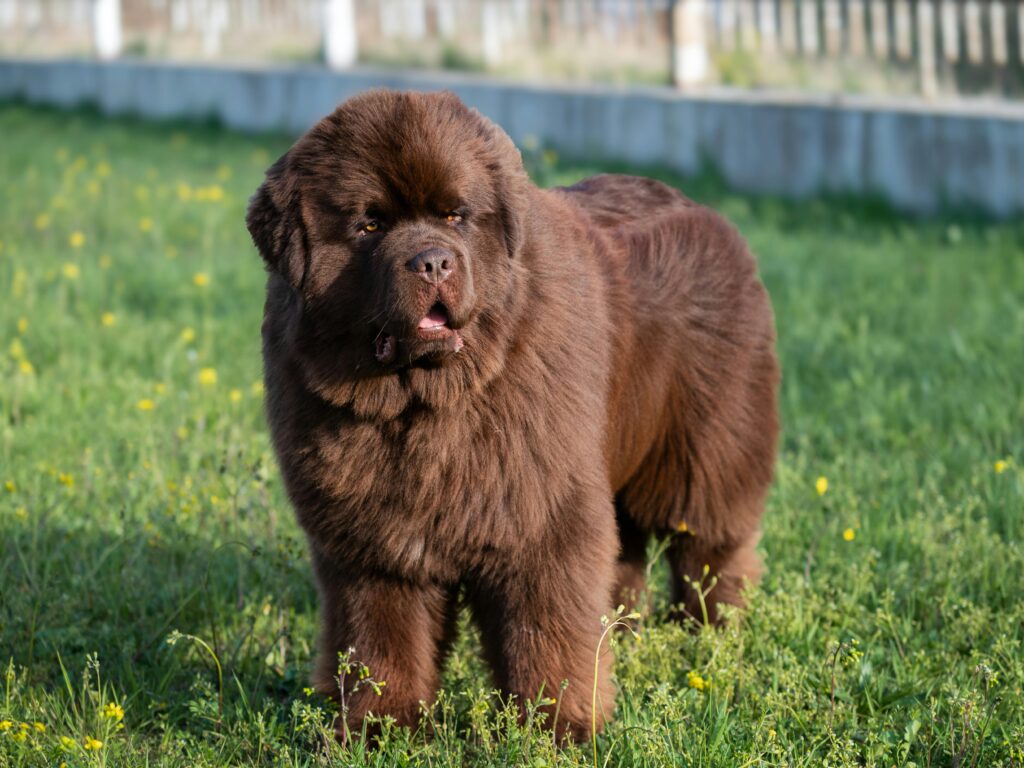
The world of giant dog breeds offers a diverse array of choices, each with its own unique history, temperament, and specific needs. Exploring some of the most popular breeds can help you narrow down your search and find the best fit for your lifestyle.
- Great Dane: Often referred to as the “Apollo of Dogs,” Great Danes are known for their elegant appearance and incredibly gentle, often goofy, personalities. Despite their size, they are typically calm and affectionate indoors. However, they have a relatively short lifespan and are prone to bloat and heart issues.
- Saint Bernard: Famous for their role as rescue dogs in the Swiss Alps, Saint Bernards are sturdy, powerful, and incredibly patient and loving. They are excellent family dogs, but they drool significantly and require regular grooming. They are also prone to orthopedic problems and heart conditions.
- Neapolitan Mastiff: With their impressive wrinkles and powerful build, Neapolitan Mastiffs are guardians by nature, devoted to their families. They are generally calm and quiet but require significant socialization and training due to their protective instincts. They are prone to hip and elbow dysplasia, cherry eye, and skin fold infections.
- Newfoundland: Known as the “gentle giant” of the working group, Newfoundlands are sweet, patient, and excellent with children. They are strong swimmers and thrive in cooler climates. They have a thick coat that requires regular grooming and are prone to heart conditions and hip dysplasia.
- Bernese Mountain Dog: Originating from the Swiss Alps, Bernese Mountain Dogs are striking with their tricolor coats and friendly, affectionate personalities. They are excellent family dogs who enjoy being part of the action. They are unfortunately predisposed to several types of cancer and orthopedic issues.
- Mastiff: One of the largest dog breeds in the world, Mastiffs are truly gentle giants, known for their calm and courageous demeanor. They are devoted to their families and excellent natural guardians. Like other giant breeds, they are prone to hip and elbow dysplasia, bloat, and eye problems.
Researching specific breed characteristics, talking to breed enthusiasts, and visiting reputable breeders or rescues are crucial steps in making an informed decision. Remember that individual personalities can vary, but understanding the general breed traits is a great starting point.
Living with a Giant Dog: Enrichment, Exercise, and Everyday Life
Owning a giant dog breed is a unique experience that will undoubtedly enrich your life. However, it also requires adapting your daily routines and providing for their specific needs.
Exercise is still crucial, even for calm indoor giants. Daily walks are essential for their physical and mental well-being. The amount and type of exercise will vary depending on the breed, age, and individual dog. Mental stimulation is equally important. Puzzle toys, training sessions, and interactive games will help keep their intelligent minds engaged and prevent boredom-related destructive behaviors.
Grooming requirements will vary depending on the breed’s coat type. Some giant breeds have thick double coats that require regular brushing to prevent matting, while others have shorter coats that are easier to maintain. Be prepared for potential shedding, especially during seasonal changes.
Food and supplies will be a larger investment. Giant dogs eat more food than smaller dogs, and larger collars, leashes, beds, and toys will be necessary. Factor these ongoing costs into your budget.
Integrating a giant breed into your family life requires consideration. If you have small children, supervised interactions and teaching children how to behave around a large dog are essential. Their size means accidental bumps or knocks are possible, so teaching gentleness is important.
Finally, be prepared for the attention your giant dog will attract. People will stop to admire and ask questions. If you are not comfortable with frequent interactions, this is something to consider. Most giant breed owners find this attention a source of joy and an opportunity to educate others about their beloved companions.
Making the Commitment: Is a Giant Dog Breed Right for You?
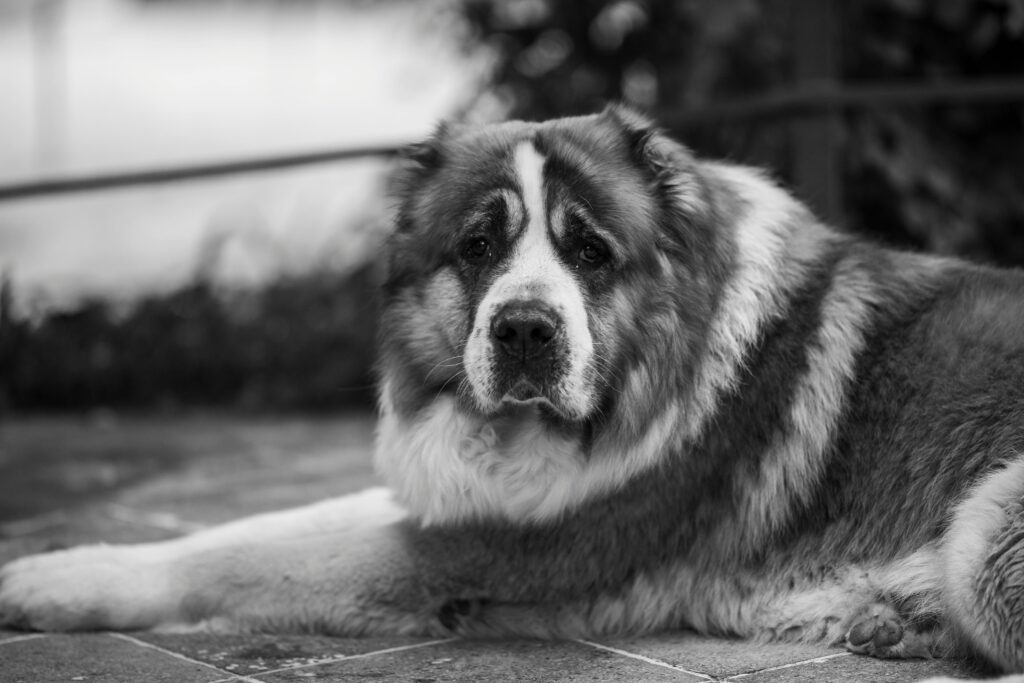
Bringing a giant dog breed into your life is a significant decision that should not be taken lightly. It’s a commitment to providing ongoing care, training, and attention for many years. Ask yourself honestly if you have the time, resources, and lifestyle to accommodate a dog of this size and with these specific needs.
Consider your living situation, your activity level, your budget, and your willingness to dedicate time to training and socialization. Do you have access to a knowledgeable veterinarian experienced with giant breeds? Are you prepared for the potential health challenges and higher veterinary costs associated with these dogs?
If you’ve carefully weighed these considerations and are still drawn to the idea of a giant dog companion, the rewards can be immeasurable. The love, loyalty, and unique bond you will share with a giant breed can be truly special.
Conclusion: A Grand Companion Awaits
Giant dog breeds are magnificent creatures with hearts as big as their frames. They offer unparalleled companionship, unwavering loyalty, and a gentle spirit that can enrich your life in countless ways. However, they are not the right fit for everyone. Understanding their specific needs – from their physical requirements and health considerations to their training and socialization – is crucial for providing them with the happy and healthy life they deserve.
By doing your research, being honest about your capabilities, and committing to providing the best possible care, you can embark on a rewarding journey with a gentle giant by your side. The bond you will forge will be a testament to the power of connection and the extraordinary love that a giant dog breed can offer.
What has been your experience with giant dog breeds? Share your stories and insights in the comments below. Do you have a favorite giant breed? We’d love to hear about it!
